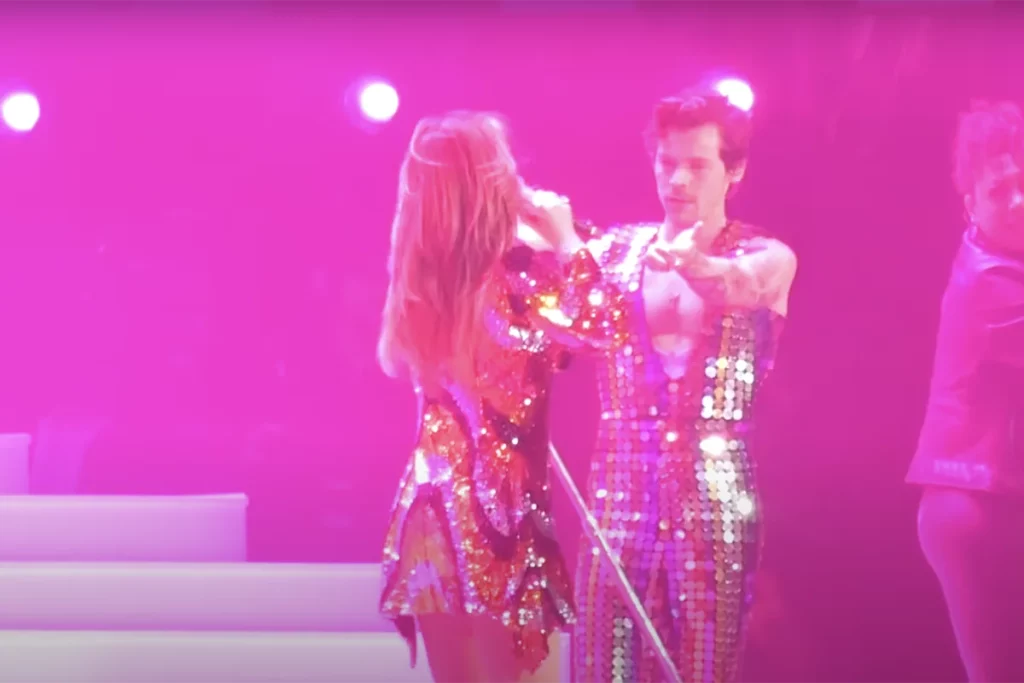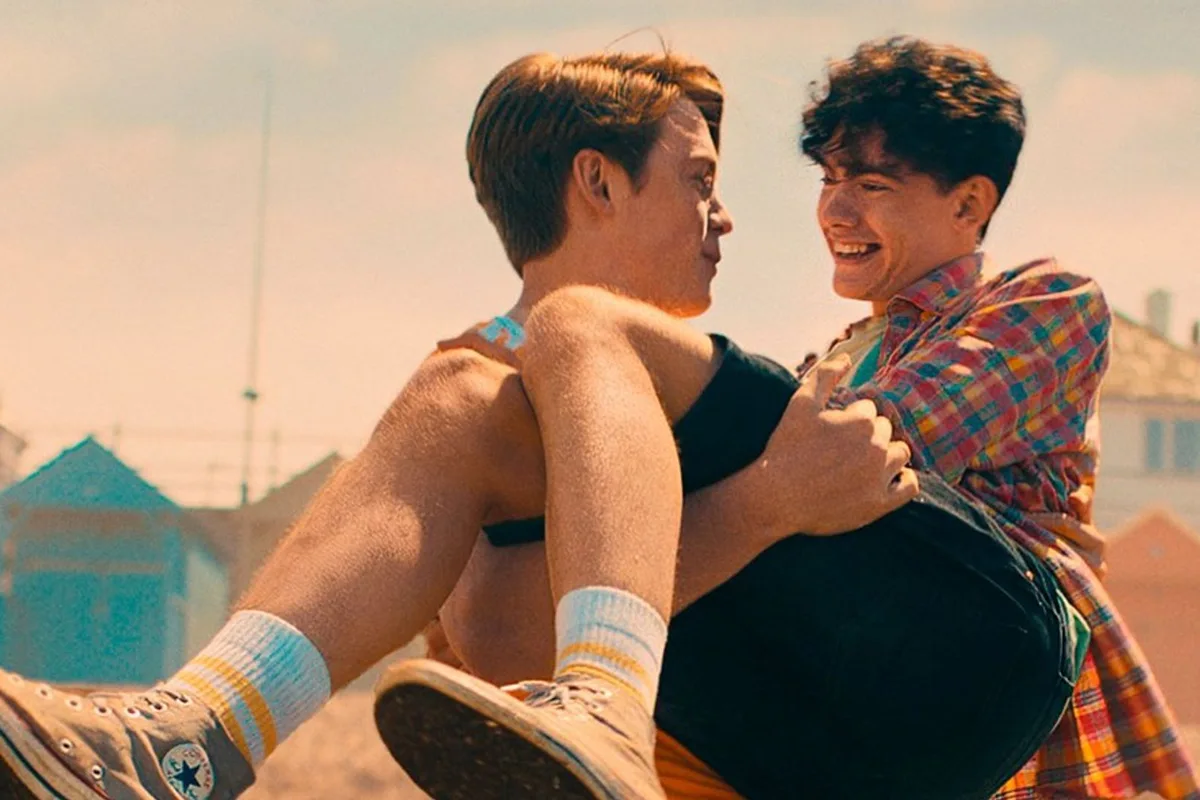Picture something that seems to start out with the best of intentions but ends up doing worse. The issue of queerbaiting opens the debate to human respect and the need for a different LGBTQ+ representation
Picture something that seems to start out with the best of intentions but ends up doing worse: on the one hand you will recognize the harm and shallowness of what happened; on the other hand you will be told that you can’t complain too much because nothing ever fits. The conversation around queerbaiting often revolves around this.
The meaning of queerbaiting: a phenomenon spreading in the pop culture
According to the Oxford English Dictionary, queerbaiting is «the practice of trying to attract and capitalize on LGBTQ+ audiences or customers in a deceptive or superficial way». It is a marketing technique used primarily in fiction and entertainment in which authors and creators hint at, but then do not describe, same-sex romance or other LGBTQ+ representations.
The purpose is to attract the audience – to literally bait, as the word suggests – with the promise that there will be a positive queerness narrative without then bringing that representation to life.
Queerbaiting has been observed in popular culture and fiction (movies, television series, books, music, advertising, various forms of media), but also in celebrities who convey an ambiguous sexual identity through their works and statements. This tactic has been used in other areas. In the case of a politician, for instance, running for office who uses it to gain support or involvement in a campaign.
A matter of human respect and an unfulfilled promise of LGBTQ+ inclusiveness
The term originated and has been popularized since the early 2010s through discussions in Internet fandom. In places where people group together united by a passion for a common phenomenon, character, or object, but it has a broader history going back as far as the Seventies.
Queerbaiting is not only a manipulative marketing tactic, but can have negative effects on LGBTQ+ people, particularly on their mental health, becoming a cause of social isolation as it invalidates their experience and existence as humans.
The matter unwrapped on the matters of human representation, queer inclusiveness and human respect.
LGBTQ+ representation and inclusiveness. Human respect is not about innuendo or platonic love
This has long been discussed online only to describe those entertainment products such as movies and TV series that aimed to retain LGBTQ+ viewers by inserting characters who have a strong and obvious carriage toward other same-sex characters, but never going beyond innuendo or platonic love.
In many of these cases, the writers, creators, or actors involved in the series themselves fed viewers’ theories about these hypothetical same-sex attractions, convincing people to continue following the story in the hope of finally seeing characters so much in love with each other together.
«Queerbaiting is crippling. It perpetuates the idea that queer people cannot have happy endings. It reinforces the idea that TV producers are too afraid to include overtly queer characters for fear of audience reactions (as in Buffy The Vampire Slayer, when directors turned a passionate, romantic kiss between Buffy and Faith into a forehead kiss). It raises the hopes of queer viewers, who are looking for authentic representation, only to destroy them in a bad attempt to gain visibility», commented critic Isabel Harder.
Bucky Barnes in the series Supernatural
Discussions on the issue began in the early 2010s, on platforms such as Tumblr and Twitter, which bring together large communities of caring fans often from the LGBTQ+ community. To be accused rightly or wrongly of queerbaiting over time have been many famous products, including the Marvel films in which Captain America and Bucky Barnes appear and the series Supernatural, in which protagonists Dean and Castiel took fifteen seasons before saying I love you to each other. Another example is that of Sherlock Holmes and Dr. Watson in the BBC series that aired between 2010 and 2017, in which the intimacy and fidelity between the two protagonists is not only evident but also commented on in a winking way by various characters within the series itself.

Human respect comes from queer representation – Queen Elsa in Frozen or the protagonist of Raya and the Last Dragon
In other cases, queerbaiting has occurred when an upcoming film or series has been called inclusive by the people who worked on it, only to include barely one or two scenes showing, quickly, same-sex relationships. That’s what happened with Marvel’s Thor: Love and Thunder, which actress Natalie Portman had called very gay but which, in the end, contained barely a single scene in which two same-sex aliens got married. Or with Star Wars: Rise of Skywalker, which according to director J.J. Abrams included «queer representation» but had a single scene in which two unnamed women kissed in the background.
Disney, in particular, has been receiving this kind of criticism for some time: according to Professor Kodi Maier of the University of Hull, the company «is willing to create animated films and television programs that allude to queer content, but only on the condition that it does not damage its conservative image».
This was discussed by analyzing the intense friendship between Luke and Albert, protagonists of the 2021 animated film Luke, which is about the difficulties of being accepted by one’s family as different. Also in reference to the many strong and independent female characters who refuse to be with a man that have been seen in Disney films in recent years, such as Queen Elsa in Frozen or the protagonist of Raya and the Last Dragon.
Spoiler: Velma in Scooby Doo was lesbian – queerbaiting in the cartoons
In some cases, especially when it comes to cartoons, the prohibition against making a character’s homosexuality explicit comes from the top: the creators of The Legend of Korra, one of the first cartoons to feature a queer protagonist, for example, have verbally confirmed that the relationship between Korra and Asami is romantic, but admitted that they left some ambiguity about it in the series to ensure that the broadcaster would air it anyway.
More recently, the Scooby Doo writers said they have known for more than a decade that one of the cartoon’s main characters, Velma, is a lesbian, but that it has long been impossible for them to include this side of her identity in the episodes. «In the initial script of the 2001 film, Velma was explicitly a lesbian. But the studio kept watering it down, and eventually they gave her a male boyfriend», said one of the writers, James Gunn.
In recent years, accusations of queerbaiting have begun to be applied not only to entertainment products and fictitious characters, but also to flesh-and-blood celebrities, guilty in the view of some fans of posing as if they were part of the LGBTQ+ community without being so, in order to attract the support of queer fans, or of not having the courage to come out and expose themselves to possible criticism in a world where homotransphobia is still an issue.
Queerbaiting under the spotlight: the cases of Taylor Swift, Ariana Grande, Billie Eilish and Andrew Garfield
In addition to Kit Connor, celebrities such as singers Taylor Swift, Ariana Grande, and Billie Eilish and actor Andrew Garfield have often found themselves having to ignore or dodge persistent voices asking them to make their sexual orientation explicit. Undoubtedly the one who most often attracts this kind of criticism, however, is Harry Styles, who relies heavily on an aesthetic that overturns the expectations one normally has for a straight man – often wearing nail polish on his nails, but also pearl earrings, frilly blouses, fluttering dresses, and sequins – and who recently played the role of a gay cop in My Policeman.
Several commentators, after Connor’s forced coming out, began to examine and criticize the practice of accusing celebrities of queerbaiting, pointing out that it is unfair to insistently ask people to discuss their sexuality in public even when they are not ready to do so, whether it is for reasons of privacy, safety, or just because they are still thinking about it.
Harry Styles’ case – human respect and queerbaiting
«By arbitrating on whether Harry Styles is ‘allowed’ to wear a green feather boa on stage, or whether Billie Eilish can include saucy references in her music videos, or whether Kit Connor can play a bisexual teenager without explicitly confirming that he himself is a bisexual teenager, we create a hierarchy of queerness, as if there is a right or wrong way to actually be queer», Patrick Lenton wrote.
Explicitly discussing the case of Harry Styles, writer Otamere Guobadia explains that, in the eyes of those who criticize him, it would be easy and convenient for the singer to show himself as transgressive and nonconformist by wearing clothes that do not conform to his gender, while non-famous people who dress this way on the street risk violent reactions. The subtext is that some queer people find it undeserved that Styles gets so much attention by dressing in a way that does not conform to his gender, all the more so because the singer has always refused to publicly define his sexual identity and has only ever been seen with female partners.
Queer representation and the disrespect of human beings
At the heart of queer baiting, the question we should be asking is: can we talk about progress if the focus of the narrative remains cisgender heterosexual and white people fishing from other people’s culture and rarely people from the marginalized group in question? By playing with ambiguity without ever confirming or disproving anything, queer baiting succeeds in capturing the attention of a large segment of the audience but does not offer substance or a concrete political position.
Queer representation continues to take place through the perspective of cis-het people, even more so men, who represent what they know and project of that imaginary only and exclusively from an external and privileged lens. Of course, everyone is free to express and imply what they want without the urgency or moral obligation to declare themselves part of the community.
Whether it helps to dismantle the codes of heteronormativity in the media or is a lazy marketing strategy, the problem of queer baiting would disappear if telling or representing certain stories were not always a single category, but were given real space and speech by LGBTQ+ people, so that they are not forgotten once the show is over.



















